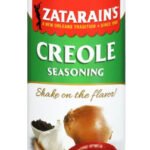Catching And Cooking Shark
Not the best-tasting, and in some cases not legal to catch and kill, a shark catch may be a bucket list item

Catching Shark

Size and weight: Many species are between 18″ and 32″, and weigh between 3 and 11 lbs.
General Info
Sharks gestate twice a year between 8 and 11 months. Eating some kinds of shark is permitted, but Nurse, Lemon, and Black Tips have to be returned to the water if caught. Bonnet sharks, which are small and tender, provide the best eating. Other species include Black Nose, Blacktip, Bonnethead, Bull, Hammerhead, Lemon, Nurse, Tiger, and Spinner.
When/Where
Time of year: Sharks are active year-round.
Location: Sharks like warmer areas. In winter, plants that warm the water are good for shark fishing. Typically sharks inhabit coastal seagrass, sand, or rubble habitats.
Time of Tide: Between 4 pm and 9 am.
How
Bait: Cut bait including greenbacks, shrimp, lady fish are best for shark fishing.
Method: Reel and rod, with light tackle, and chum.
Cooking Shark

Drink Pairings

Drinks: Fine white wines
Flavor
Deliciousness: 4 out of 10.
Flavor: Very dry, bland, plain. Requires seasoning for flavor.
Cleaning
Cut all fins off. Strike behind back and down backbone.
De-gutting: De-gutting is not necessary if you are cutting fillets – simply cut around the fish guts.
De-blooding: Spanish Mackerel, Redfish, Grouper and Sharks are typically de-blooded.
De-veining: Is recommended for larger fish, including Spanish Mackerel, Redfish, and Sharks.
Cooking
Methods: Redfish be fried, grilled, baked or sautéed (blackened), and can be worked into most any cooking tradition (see below).
Dishes: Shark is better-suited for steaks.
Traditions: Because of it’s unusual texture and rarity, shark might not be ideal for soups, stews, and appetizers that other ‘fish’ might be better suited for.
Suggested Dishes
Shark flank steak is a popular dish.
Cooking Fish, Generally
Traditions: Plain, Upscale, Southern, Creole, Cajun, Western, Southwestern
Cooking Methods
Sautéed (blackened): use a high-temperature oil with minimal flavor. Avocado, grapeseed, linseed, sunflower, safflower.
Deep Frying: use similar oil to sautéed, but more of it.
Baking: Method 1: Use tinfoil and leave open. Seasoning is household seasonings. Lemon pepper and garlic. When fish is done, you’d use lemon juice and butter. Don’t add butter before the fish is cooked. Method 2: same but close foil.
Grilling: if you want more flaky entrée, low heat. Maybe 10 minutes, both sides. Heavier texture, use a higher temperature.
Dish Descriptions
Entrée: Many people prefer blackened, filet skin on one side and leave skin on the other.
Fish tacos: Require fileting both sides. Cube, deep fry in a batter.
Fish soup or stew: Reheats well. A common cioppino or Cajun recipe will suffice.
Fish salad. Deep fry to keep together, into a crisp. Cover meat halfway full with oil. Cook in a cast iron skillet. Use a Caesar dressing.
Sides: Sweet potato, baked potato, potato wedges, brown rice, hush puppies
Vegetables: Asparagus, broccoli, salad, sliced tomatoes and avocado, string beans, seasoned collards, okra
Appetizers: Ceviche dip and fish cakes.
Restaurants To Cook Your Catch
Seasonings
Zatarain’s. Crispy Southern Style or Lemon Seasoning.

Various ‘keto’ seasonings.


